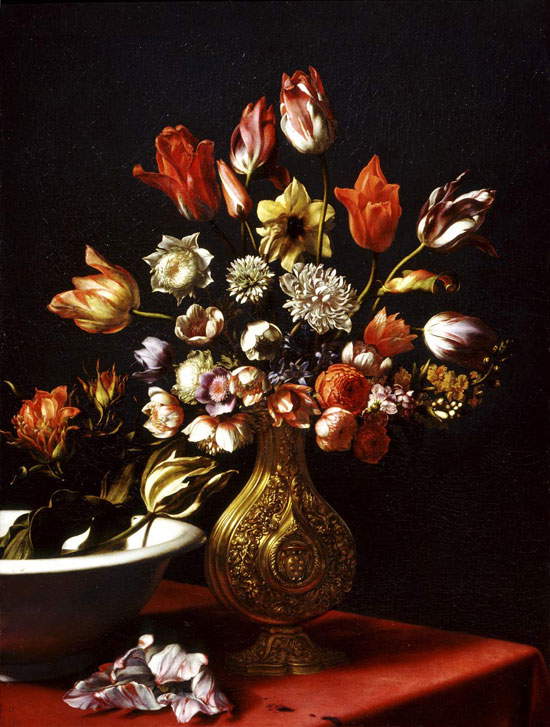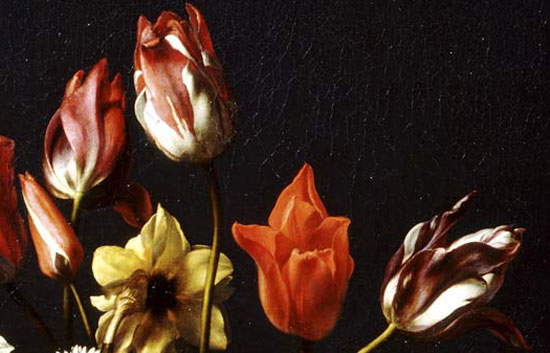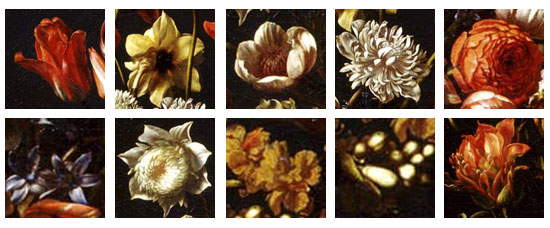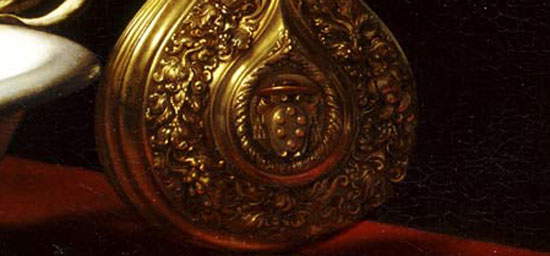A still life by Carlo Dolci: the most beautiful ever painted in Florence?
Almost all of the production of Carlo Dolci (1616 - 1687), among the greatest artists of seventeenth-century Florence, consists of sacred subjects, which fully reflect the temperament of this great painter. And the temperament is that of a pious and devout man, as well as quite reserved: there are no events of particular anecdotal importance in Carlo Dolci’s life, nor any important transfers. The only trip the artist made was in 1672, to Innsbruck, where he went for the purpose of portraying the then barely 20-year-old Claudia Felicita of Habsburg, daughter of Ferdinand Charles, archduke of Austria. But it was a trip that Carlo Dolci faced unwillingly: he much preferred the safety and daily routine of his beloved Florence, a city from which, except for the trip across the Brenner Pass, he never moved.
We said that Carlo Dolci was a particularly devout artist, to the point of considering his art both a gift from God and a means of honoring Him: thus saints, Christs, Madonnas abound in his art. It is an art that often verges on the prissy and faint-hearted, not least because poses and gestures are often repetitive and monotonous, but it is also an art can rely on a superfine, very high technique, founded onexceptional precision, impeccable skill in finishing figures and extreme simplification of compositions, which allowed the artist to minimize distractions and thus concentrate with a high degree of accuracy on his subjects: qualities that very few artists in the history of art were able to master as confidently as he did. However, Carlo Dolci did not put his mastery at the exclusive service ofsacred art: it sometimes happened to him, albeit rather infrequently, to execute paintings whose content fell outside the themes of religion. One such case is that of a very fine still life, now preserved in the Uffizi, which Carlo Dolci painted in 1662 and which constitutes a formidable essay of his technique, all the more valuable if we consider that it is theonly still life that, as far as we know, the painter painted.
 |
| Carlo Dolci, Vase of Flowers and Basin (1662; oil on canvas, 70 x 55 cm; Florence, Uffizi Gallery) |
Cristina Acidini, in describing the painting as part of the exhibition Twelve Months of Art, promoted a couple of years ago by the Polo Museale Fiorentino, wondered if this painting by Carlo Dolci was not the “most beautiful still life that has ever been painted in Florence,” a city that has distinguished itself over the centuries for its “love of flowers and their representation, both artistic and botanical.” Usually, when we walk through the corridors of a museum, we cast just a distracted glance at the still lifes: most consider them insignificant, not very vital, not capable of conveying feelings to the viewer, or of telling a story. Admiring the work of Carlo Dolci, one has to reconsider, and one has to wonder if the English have not come up with a more appropriate term than ours to define the still life genre: still life. Indeed, Carlo Dolci’s painting would seem to be pervaded by a soul that makes his flowers alive and palpable, eternalizing on canvas the very symbols of transience, so ephemeral and delicate. That the painting represents a vivid piece of daily life in the Medici court of the mid-seventeenth century, we also notice from the detail of the basin placed beside the rich gilded vase: there are in it, still, some cut flowers, a sign that whoever is making the sumptuous and colorful bouquet has not yet finished the work, and perhaps interrupted it to give the painter time to wait for the painting. There are also petals laid on the table, probably discarded because they fell off while arranging the flowers, or discarded because they need to be replaced with newer, fresher arrivals, or simply not deemed suitable for the flower arrangement. These details, combined with the fact that the flowers are represented in their true proportions, suggest to us that Carlo Dolci may have painted his composition from life.
 |
| Detail with tulips and narcissus |
And it is also an uncommon case of a composition that we could call"seasonal": in fact, we have a bouquet composed exclusively of flowers that bloom in spring. And which are described with botanical precision. The undisputed protagonists are the tulips and anemones, included in the vase in different varieties, but there are also ranunculus, violacea, orange blossoms, a narcissus (curiously depicted from behind) and some hyacinth flowers. Of the anemones, two are stradoppi, that is, they have stamens and pistils that have turned into petals. The description of the painting in the Medici inventories also helps us to identify the particular tulip in the basin: “A canvas painting with a vase made of gold, chiseled with the arms of His Reverend Highness, within it different flowers, a white basin, with a tulip of 100 leaves, by the hand of Dolci, with pearwood adornment dyed black and scorned in waves.” The “100-leaf tulip” in the description is the one that, precisely, we see resting in the white bowl: it is an extra-double tulip, probably of the Orange Nassau cultivar.
 |
| All the flowers in the painting. First row, from left: tulip(Tulipa gesneriana), narcissus depicted from behind(Narcissus pseudonarcissus), coronary anemone, extra-double-flowered coronary anemone, buttercup(Ranunculus asiaticus). Second row, from left: hyacinth(Hyacinthus orientalis), double-flowered coronary anemone, yellow violacea(Cheiranthus cheiri), orange blossom buds, tulip stradoppio. |
The “coat of arms of His Most Reverend Highness” is that of Cardinal Giovan Carlo de’ Medici (1611 - 1663), younger brother of Grand Duke Ferdinand II, and commissioner of the painting. We see the coat of arms in the center of the gilded vase: it consists of the shield with the six Medici balls, surmounted by the cardinal’s hat. The vase, too, provides us with evidence of Carlo Dolci’s great technical skill: note how the light reflects off the highly polished surface of the gold, making the details in relief stand out, such as the leaves of the plant motif decoration, or even the Medici balls themselves, on which the artist has painted small white specks to make the reflections glow. The light comes from the left and invests not only the vase and the flowers, but also the table covered with a red tablecloth: we therefore need a rather strong light source (a window, for example) outside the edges of the painting.
 |
| Giovan Carlo de’ Medici’s coat of arms on the vase. |
We know that Giovan Carlo de’ Medici was a great botany enthusiast: in his wealthy home on Via della Scala in Florence, known today as Palazzo Venturi-Ginori after the name of the family that owned it in the early twentieth century, and today the site of the Lycée International Victor Hugo, the cardinal had a garden created, which he tended personally. In this garden, Giovan Carlo de’ Medici also cultivated species that were rare and exotic for those times, among which no one forbids us to think that the “100-leaf tulip” depicted in the painting might have been among them. Just as no one forbids us to think that the cardinal wanted, from Carlo Dolci, a painting depicting the species he considered the most valuable in his garden: this is therefore how the “cumbersome” presence of tulips and anemones could be explained.
And the cardinal, to get the painting, spared no expense. Here is the document, dated May 23, 1662, that attests to the payment to the artist: “At various expenses scudi 60, good to Carlo Dolci painter and they are for the value of a painting of flowers in the natural state, so declared the price by His Reverend Highness master, as per attestation of Signor Marchese Filippo Niccolini... warning that the said price must never serve as an example being disorbitant and with this huomo was considered the time he lost in it, which was very long, while in His paintings He uses such diligence and finesse that greater could not be desired.” The cardinal, in short, was well aware that he had spent an exorbitant amount of money on that painting, out of the market for a still life, which was considered perhaps as the least prestigious subject for a painting. To have a term of comparison, it is necessary to consider that Carlo Dolci’s small paintings of a devotional nature (thus among the subjects considered most valuable), were paid, as Luigi Lanzi attests in his Storia pittorica dell’Italia, the sum of one hundred scudi each. Why then was the cardinal brought to pay such a high sum? He himself justifies the expense: it seemed to him the right amount for such a diligent and scrupulous painter, who had taken a long time to finish the painting. And to depict flowers in such a precise way, choosing Carlo Dolci’s meticulousness could only be the most suitable choice. The painting, still for about a month, will be on display in theexhibition Io Carlo Dolci, which is being held in Florence’s Palazzo Pitti until November 15: it is one of the highlights of the exhibition, fully enhancing a painting that in its usual location perhaps goes too unnoticed.
Warning: the translation into English of the original Italian article was created using automatic tools. We undertake to review all articles, but we do not guarantee the total absence of inaccuracies in the translation due to the program. You can find the original by clicking on the ITA button. If you find any mistake,please contact us.



























